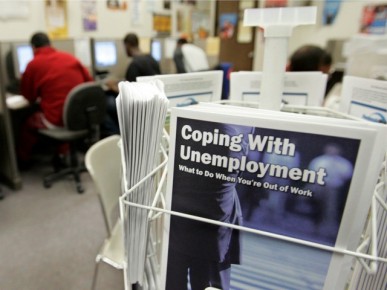The number of Americans not in the workforce during the month of April increased substantially compared to the previous month — again tipping over the 94 million mark — according to the latest Labor Department data.
 The Bureau of Labor Statistics reports Friday that 94,044,000 Americans were neither employed nor made an effort to find employment — due to discouragement, retirement, schooling or otherwise — in April.
The Bureau of Labor Statistics reports Friday that 94,044,000 Americans were neither employed nor made an effort to find employment — due to discouragement, retirement, schooling or otherwise — in April.
Last month’s numbers represented an increase of 562,000 over the month of March, when 93,482,000 Americans were out of the workforce.
April’s comparatively high non-participation level halted an earlier trend of decline that followed after the number of people out of the workforce hit a record high of 94,610,000 last October.
The labor force participation rate also took a slight hit, declining from 63.0 percent in March to 62.8 percent in April. Though lower than the month prior, April’s participation rate was slightly higher than it was a year ago.
Additionally the civilian labor force declined by 362,000 people compared to March, hitting 158,924,000.
In total 151,320,000 Americans had a job last month and another 7,920,000 Americans were unemployed.
Overall the economy added 160,000 confirm payroll jobs in April and the unemployment rate remained at 5.0 percent.
The number of foreign-born people employed in the United States dipped slightly last month compared to the record high set in March, but remained above 25 million mark, according to data released Friday by the Bureau of Labor Statistics.
The BLS reports that 25,460,000 foreign-born people had a job in the U.S. during the month of April, a decrease of 281,000 compared to the month of March when a record 25,741,000 foreign-born people were employed in the U.S.
The BLS does not distinguish between legal and illegal immigrants, defining the foreign-born as:
Those residing in the United States who were not U.S. citizens at birth. That is, they were born outside the United States or one of its outlying areas such as Puerto Rico or Guam, to parents neither of whom was a U.S. citizen. The native born are persons who were born in the United States or one of its outlying areas such as Puerto Rico or Guam or who were born abroad of at least one parent who was a U.S. citizen.
The not-seasonally-adjusted unemployment rate among the foreign born was 4.3 percent.
The number of native-born Americans employed, according to the not-seasonally-adjusted data, experienced substantial growth from March to April, reaching 125,615,000, an increase of 618,000. The native-born unemployment rate was 4.8 percent.
Both the foreign-born and native-born populations in the U.S. have experienced job growth since President Obama’s inauguration in January of 2009, however when considered against population growth, foreign-born people have fared better than their native-born counterparts.
Since Obama took office the working-age, foreign born population has increase by 5.79 million and the working-age, native-born population has increased by more than 12.41 million. In that same period of time foreign-born people gained 4.08 million jobs while native-born people gained 6.55 million jobs.
http://www.breitbart.com/big-government/2016/05/06/jobs/
http://www.breitbart.com/big-government/2016/05/06/foreign-born-employment-u-s-dips-slightly-record-hits-25460000/
